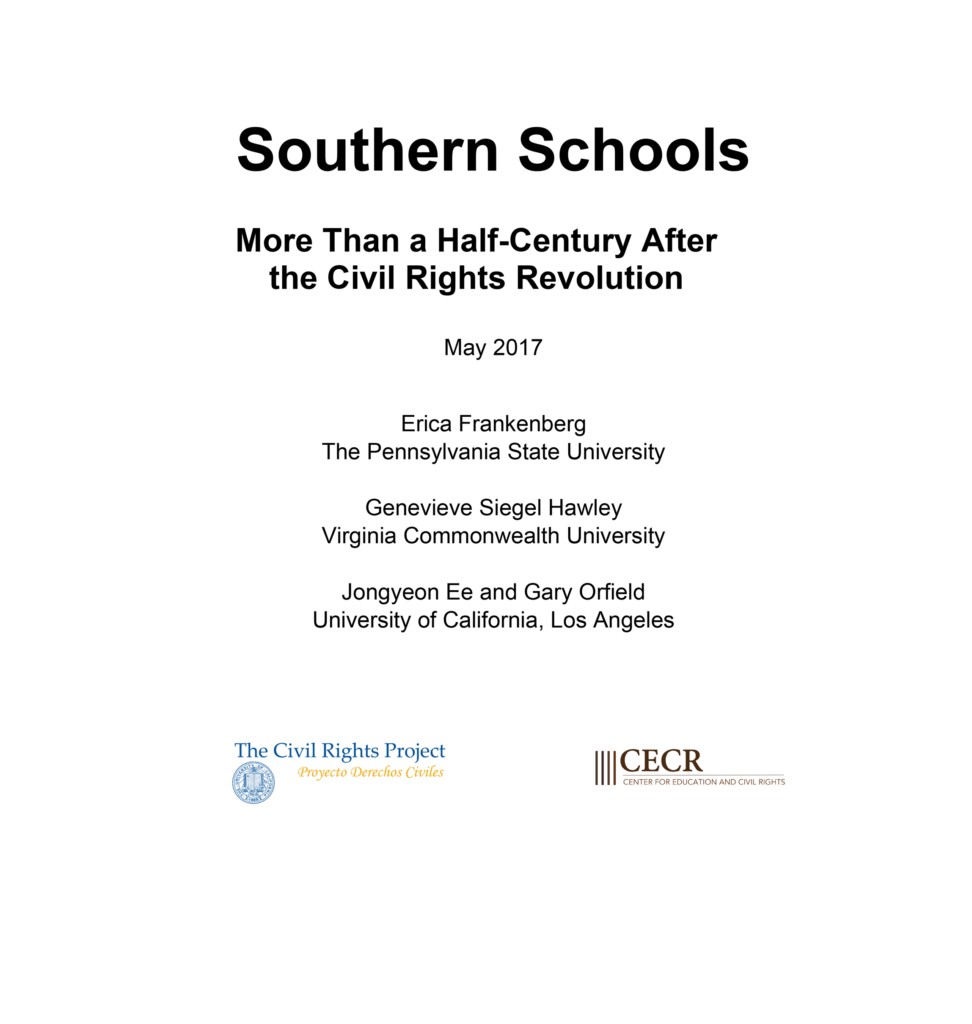The South was the central focus of the Brown v. Board of Education decision from the U.S. Supreme Court in 1954. The landmark ruling held that laws mandating segregation in the school systems of the eleven states of the Old Confederacy, along with D.C. and six other states, violated the U.S. Constitution. Intense opposition met the decision across the South. A decade later, 98 percent of black students were still in all-black schools when Congress passed the l964 Civil Rights Act. The Act forbade discrimination in any school district receiving federal funds and authorized the Justice Department to sue school systems even if they were willing to give up their federal funds. A year later, federal funding for education increased dramatically through the passage of the Elementary and Secondary Education Act, adding an important carrot to federal enforcement efforts. The only serious period of enforcement using these authorities came in the 1965-l968 period which initiated historic changes—making the South the most integrated region of the country by the early l970s.
The Supreme Court clarified and strengthened desegregation laws for the region in the historic decisions in Green (l968) and Swann (1971). The lower courts also found the Nixon Administration guilty of intentionally ignoring those same laws and forced it to implement urban desegregation in the early 1970s. At desegregation’s peak, there were desegregation plans in almost all Southern school districts. Some parts of the South experienced higher levels of desegregation than other major school districts around the country.
Between 1973 and 1974, the only major centers of Latino enrollment in the South were in Texas and in southern Florida. There was no Supreme Court recognition of Latino desegregation rights until 1973. By l974 the Supreme Court made its first decision since Brown limiting desegregation policy. Administrative enforcement also had virtually stopped and Congress had weakened the Civil Rights Act. By the l980s, the country had a presidential administration firmly opposed to desegregation orders and the Supreme Court’s leading opponent of desegregation, was Chief Justice. In 1991, the Supreme Court in the Oklahoma City case (Dowell) authorized courts to dissolve desegregation plans if they thought the districts had accomplished as much as was feasible.
We have followed the great successes and, in our judgment, the tragic reversals in the region as integrated schools, flourishing for decades under a court order, now turn back, watching their desegregation efforts dissolved.
Separate has never been equal.
In this report, we use two common measures of school segregation that help us to understand the types of school environments that students experience—and how those environments have changed over time. The first is a measure of concentration, or the percentage of students in racially isolated minority schools (those in which at least 90% of students are students of color). The second is the exposure or isolation index, which describes the interracial exposure that the “typical” student experiences in his/her school. If schools were perfectly integrated, the exposure of every group of students would be equal and would be the same as the racial/ethnic composition of the schools.
In compliance with the UC Open Access Policy, this report has been made available on eScholarship:
